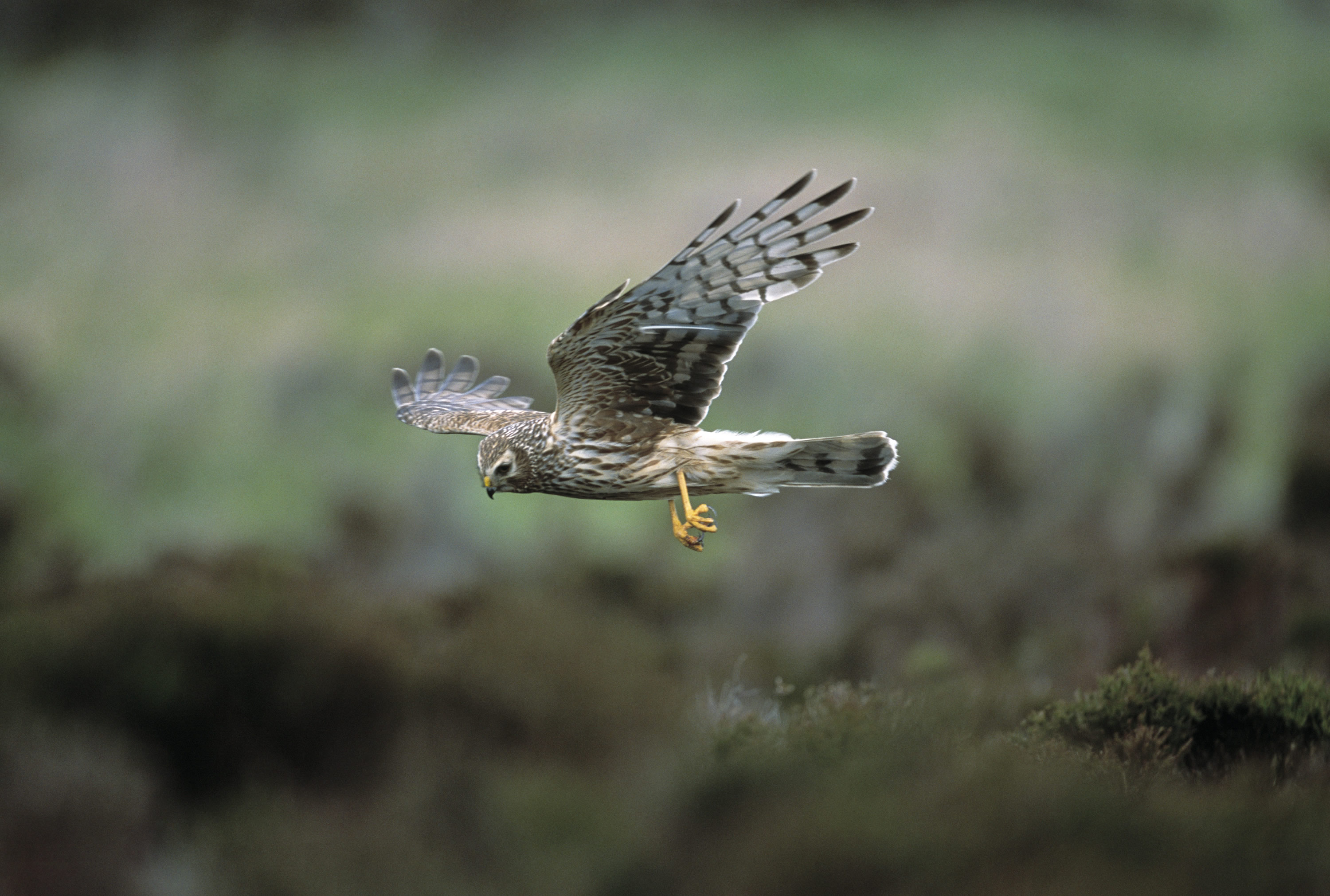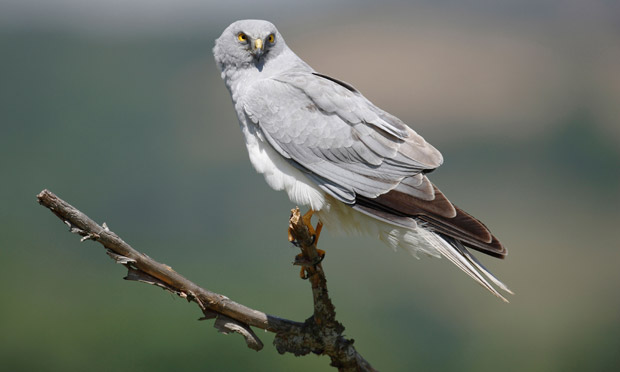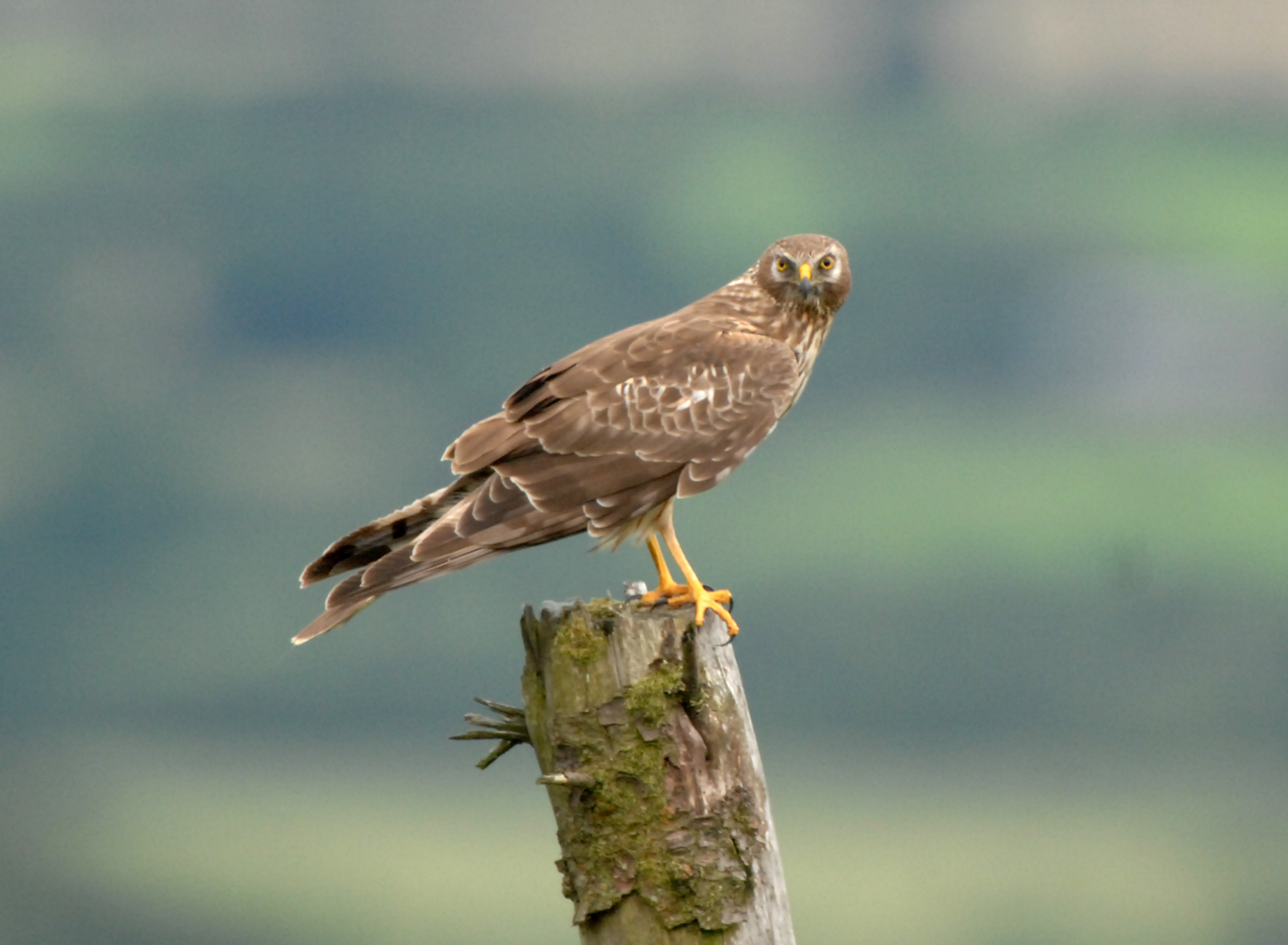
Circus cyaneus
SUBFAMILY
Accipitrinae
TAXONOMY
Falco cyaneus Linnaeus, 1766, Europe. Two subspecies.
OTHER COMMON NAMES
English: Northern harrier, marsh harrier; French: Busard
Saint-Martin; German: Kornweihe; Spanish: Aguilucho Pбlido.
PHYSICAL CHARACTERISTICS
16.9–20.5 in (43–52 cm); male approx. 12.3 oz (350 g); female
18.7 oz (530 g). Pale gray upperparts, with blackish gray band
on secondary feathers.
DISTRIBUTION
C.c. cyaneus: Europe and northern Asia to Kamchatka, wintering
from Europe to northern Africa, southern Asia, southeastern
China, and Japan. C.c. hudsonius: North America, wintering
as far south as northern South America.
HABITAT
Open country with grasses, shrubs, or young trees, grassland,
steppe, swamps and other wetlands, young plantations, croplands,
and meadows.
BEHAVIOR
Sits tall and slender, often on the ground, but also posts, rocks,
or trees. Flaps low, on upswept wings, over open country.
Roosts communally in winter on the ground, often at traditional
roosts with tens of other individuals, occasionally hundreds.
At northerly latitudes, entire population migrates, on a
broad front, southwards for the winter.
FEEDING ECOLOGY AND DIET
Hunts by day but also quite crepuscular, active into dusk. Feeds
mainly on mammals such as mice, rats, voles, and young rabbits
and hares, which it often locates in vegetation by sound, also
on birds (usually passerines), frogs, birds’ eggs, and insects.
REPRODUCTIVE BIOLOGY
Nests as solitary pair in a loose colony around a marsh or similar,
also polygamous, two or three females to a male, rarely up
to seven. Lays in the northern spring-summer, mainly May;
earlier at more southern latitudes. Nests on the ground in
dense grass, rushes, shrubs, crops or young pine plantations in
a nest of grasses and small sticks. Clutch of three to six eggs;
incubation about 30 days. Fledges at four to five weeks.
CONSERVATION STATUS
Not threatened. Main threats include habitat loss to intensified
agriculture, drainage of wetlands, reforestation, and, locally, severe
persecution by gamekeepers.
SIGNIFICANCE TO HUMANS
None known.
Photo Gallery of - Hen harrier




 Animalia Life
Animalia Life